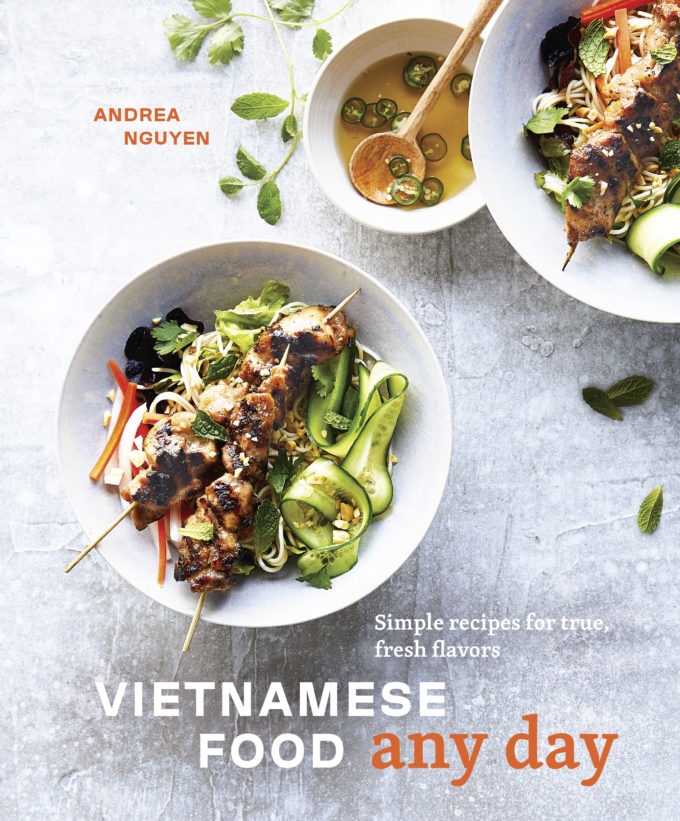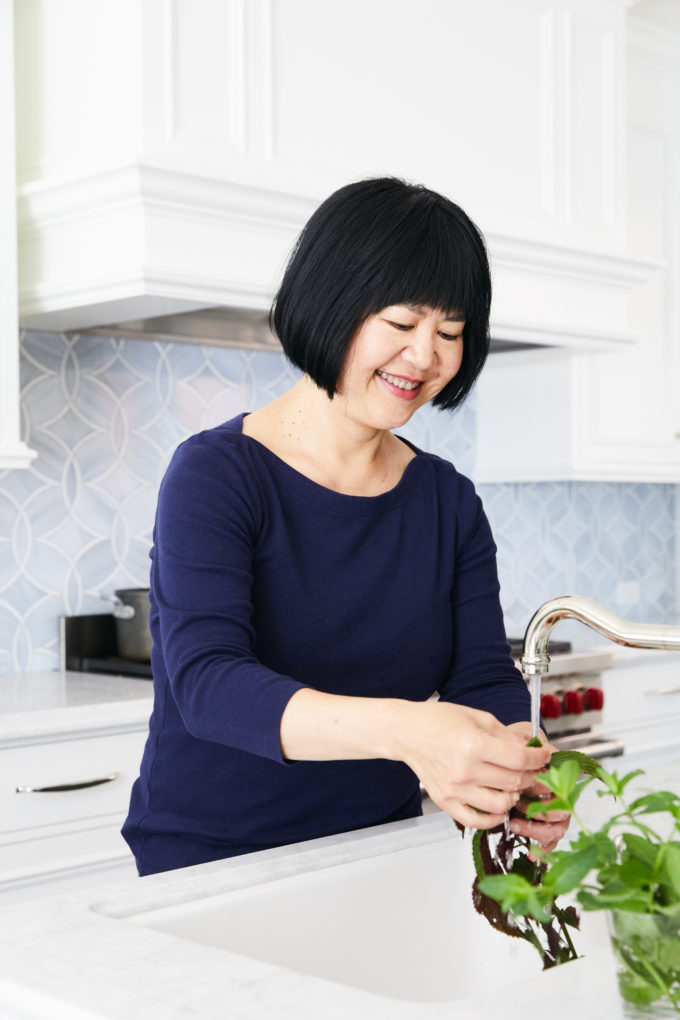
Andrea Nguyen recently published her sixth cookbook. She travels the world researching new recipes, teaches popular cooking classes and writes articles for national magazines and newspapers. Her work has won a prestigious James Beard Award, and she has even been a clue on Jeopardy. But, if you ask Andrea, she’ll tell you that her career began with a small, handwritten recipe notebook that her mom brought when their family emigrated from Saigon to California in 1975.
The notebook, and the many culinary lessons it inspired throughout her childhood, was the start of Andrea’s interest in Vietnamese food, but it wasn’t her only influence. Though nothing seems more authentic than a handwritten recipe straight from the homeland, Andrea has spent her career exploring, questioning and discovering what it means to make “authentic” Vietnamese food.
“We want to cook the way our mothers and grandmothers did, but we also want to use our Instant Pot,” says Andrea. “I mean, even my mom doesn’t cook how she used to!”
Here, Nguyen discusses what is changing in American foodways, what it means to be an “authentic” cook, and the flavor trend she hopes is coming up next.

In your latest book you describe an uptick of interest in the food of Vietnam, especially since your first cookbook was released in 2006, thanks to things like the diversification of American supermarkets. Describe some of the shifts you’ve seen in the last decade or so.
First of all, people have gotten over ingredients like fish sauce being a strange or intimidating thing… which is great, because fish sauce is delicious! I’m truly surprised how much has changed in just over a decade and I think a lot of it has to do with food media. Its people like Anthony Bourdain saying, “You know, Americans, Vietnam is not a scary place.” [Bourdain] in particular had a social agenda and he really used Vietnamese food and travel as an opportunity for healing between the two countries.
Also, the business of restaurants has changed. For the first time we have a generation of Vietnamese Americans that were born here and are going into the food business because they want to, not because it’s the only way they can make a living. I’ve zoomed in on Vietnamese cuisine in my career because I believe it is an opportunity to tell the story of a country that people are curious about and it’s so misunderstood. It’s a subject dear to me and there are so many stories to be told, from the techniques to the culture and the personal stories.
What do you think is the most common misperception about Vietnamese food?
That you can’t get the ingredients, or you can’t get the right ingredients. When developing recipes for my latest cookbook, I use my family experience of coming here in the 1970s. There were no Asian supermarkets yet, so we had to get creative and push our food to new places.
Now you can find sriracha, gochuchang and fish sauce is most large supermarkets. I think that tamarind is going to be the next big flavor. There’s been a lot about tamarind written in food media, but you do still have to go to an Asian market to get it. The concentrate is available at Whole Foods, but that’s not quite the same. I feel like tamarind will have its time.
In your book you make the case that Vietnamese food is more accessible than ever. What, in particular, about Vietnamese cooking translates so well to the modern kitchen?
The microwave is a great example. My mother loves her microwave. I don’t entirely understand the whole microwave thing but, for this book, I didn’t want to ask people to get a Chinese steamer or a wok to make some of the recipes. To me those are Asian kitchen essential appliances, but to most Americans those are specialty cooking tools. So, I learned new techniques, like steaming eggplant in the microwave.
Also, steamed egg custards are traditionally made in a Chinese steamer, but I figured out how to do them in the oven. When I told my mom, almost apologetically, that I had changed the technique for traditional steamed egg custards, I was almost asking for her permission. But to my surprise she said, “My lady friends have been making it that way for years!” That is the modern American kitchen changing the food, and it’s really great.
So what does the phrase “authentic Vietnamese cooking” mean to you?
There is a romanticism about how our mothers and grandmothers used to cook – but they’re tired!
I go back to Vietnam often for research and one time I was shopping at an open air market, and there was this women who sold huge amounts of finely chopped or minced aromatics like chili, lemongrass and shallots. Every day she started out with these beautiful piles of aromatics. One day I asked her, “Do you chop these every day by hand?” She laughed and said, “Are you kidding me? I have a machine!”
I think we have this perception that all of these “traditional” foods are lovingly done in a hand-done manner. But, just like in any cuisine, it’s up to you! You can make your pesto in a mortar and pestle or you can make it in a food processor—and you’re not a bad person for choosing the easy route. It’s no less authentic, it’s making use of what you have which is really the most authentic thing of all.
My audience is not purely Vietnamese, so for me to say “this is the way the Vietnamese do it” when Vietnamese people still debate how to do things… that’s not authentic at all. When I was researching Pho in Hanoi, I met this young woman on a plane and she invited me over to see how her mom made Pho. So, I go this restaurant that their family runs, and they are making beef Pho, but instead of beef bones in the stock pot, there were pork bones! I inquired about that and they said “Of course! Beef bones are so expensive, we would never use them.”
So, there’s a practicality, and people change their methods according to the resources or their place or what they can afford. I want to teach people the foundations of cooking instead of making up some unrealistic “rule book” they have to follow. It’s techniques, culture and personal story all in a recipe.
That’s why I think authenticity is sort of a joke in a way. I define authenticity as very kheo, a Vietnamese term that means “smart and “adroit.” It’s food that has been thoughtfully and skillfully prepared with intention, or recipes that have been streamlined but not dumbed down.
Too many people think authentic Vietnamese food means you have to shop at a Vietnamese market. But I can go to my local Whole Food and find fish stock because Vietnamese people are not only shopping at Vietnamese markets. I want to push Viet foodways from something that is “exotic” to something that is “every day,” otherwise it stays in a ghettoized situation. This food should be at the American table. I’m a Vietnamese American and I make pizza, I make lasagna and I also make Vietnamese food — I think other people should too! There’s truly no better place to be living and eating than in the U.S. right now because we are more open to new ideas, new foods and new ingredients than ever before.
